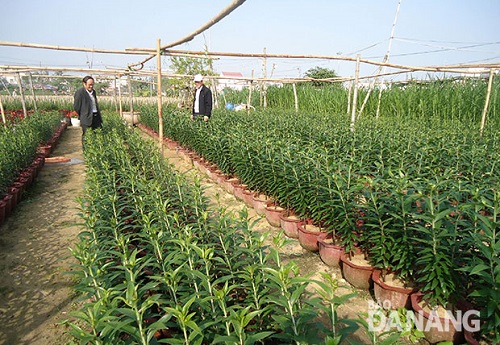Vegetable and flower growing on vacant land brings benefits to farmers
Over recent years, some of Da Nang’s farmers have taken advantage of local vacant land lots to grow a variety of vegetables and flowers for sale. These lots are located in Phuoc My Ward in Son Tra District, the My An and the Khue My wards in Ngu Hanh Son District, and the Hoa Cuong Bac and the Hoa Cuong Nam wards in Hai Chau District.
Apart from fully tapping the potential of the vacant land lots, local farmers have applied biotechnology into their cultivation to increase productivity and ensure sufficient supplies of the vegetable and flower types being demanded by the local market.
 |
| Lilies being grown in Hai Chau District’s Hoa Cuong Bac Ward |
Mr Phan Chau from Hoa Cuong Nam Ward is a typical example. In recent years, Mr Chau has taken advantage a vacant 600m2 land lot near the Hoa Cuong Wastewater Treatment Plant to grow Tet flowers. This has helped him to earn between 250 and 300 million VND each year from the sale of the flowers.
Two years ago, he started using a 200m2 soft net to protect the expensive flowers he was growing. Last year, he earned over 100 million VND from the sale of 3,500 pots of various types of Tet flowers, after deducting his production costs. Currently, he is planting up 1,500 pots of lilies, along with over 2,000 pots of such other flowers as petunia and catharanthus roseus.
Another example is Mr Le Tan Khoa who lives on Nui Thanh Street in Hai Chau District. He has grown dozens of ornamental plants on a vacant 4,000m2 land lot in the district, and has then supplied them to many restaurants, hotels and offices across the city. Thanks to this, he has earned around 2 billion VND per year from the sale of ornamental plants, and pocketed between 350 and 400 million VND in profits.
Growing vegetables and flowers on local vacant land has helped to supply high-quality flowers to the local market, assisted local farmers in raising their incomes, and made the city more harmonious and beautiful.